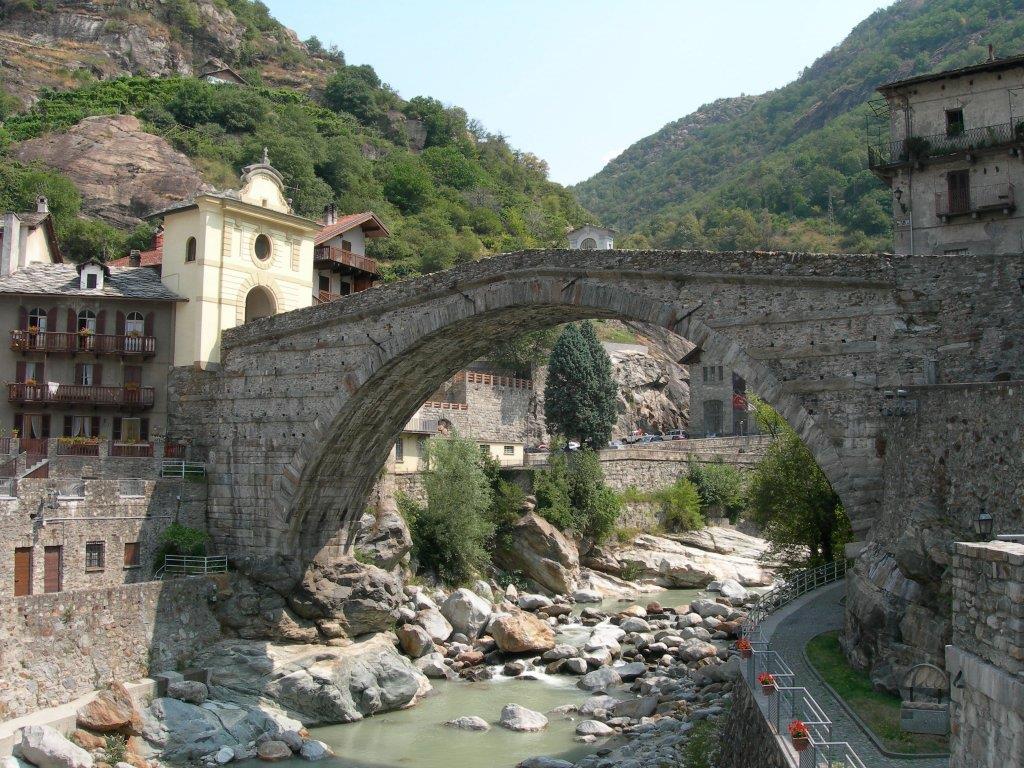07/07/2023 | Partner: Regione Valle d'Aosta
The historical bridges of the Aosta Valley
Crossing streams and rivers in mountain territories: a necessity full of dangers that echo in popular legends and reveal themselves to the eyes of those who cross one bridge after another…
The project
High-profile engineering works, physical, commercial, and cultural connectors, bridges constitute a historical heritage still little known and valued, subject to weather and climatic conditions. To respond to the typical state of decay of these structures and to improve their value, the Salvaguardare/Sauvegarder project was born, developed within the framework of the Interreg V-A Italy-France Alcotra 2014-2020 Cross-border Cooperation Program.
The Aosta Valley Region, lead partner of this project, and Haute-Savoie have promoted and started actions that aim to enrich knowledge and to ensure the preservation of these monuments to promote and share them with those who approach them with curiosity and interest.
The activities carried out by the project
The census
Scattered along the valleys, bridges are often lost in vegetation and on long-forgotten paths. The surveys on the territory have therefore made it possible to observe these structures, composing a map of the traced evidence and creating an information database with all the observable characteristics.
Historical and anthropological research
Parallel to the census, an in-depth study of historical sources was implemented, through the examination of documents, publications, toponymy, and tales of tradition.
The data collected increases knowledge about the history and events that link the bridge to the management and exploitation of the territory, enriched by stories and legends that preserve the essence of Alpine culture, absolute heritage of the ALCOTRA area.
Monitoring
To respond to the issue of the safeguarding and safety of these delicate infrastructures, an experimental structural monitoring system has been implemented on eight bridges, original examples of the different types existing in the territory.
The research project includes:
– the definition of an adapted and repeatable monitoring system on all present types of bridges;
– the adoption of digital and analogue instruments and sensors with low visual and energy impact;
– management of monitoring in real time and remotely via web platform.
The analysis of the data, to be carried out for a sufficient and significant period of time, will allow the evaluation of the effectiveness of the experimental system implemented and its ability to be reproduced for the monitoring of similar historical structures with the ultimate goal of anticipating critical situations and evaluating timely and targeted restoration or consolidation interventions.
Training and dissemination
A technical training for insiders and organized guided tours involved an attentive audience, raising awareness of a more aware and interested approach.
In order to share the knowledge of the historical asset, at the 8 monitored bridges, informative panels have been set up, where a QR Code allows access to further information.
Bridges across space and history
With its marked mountain relief and the multitude of waterways, the Aosta Valley is characterized by the presence of numerous bridges. Beyond the functional aspect, some of them are the very landmark of the place to which they belong.
On important routes, such as the Roman Via delle Gallie and the subsequent Via Francigena, but also along minor routes used in everyday life, the bridges maintained or rebuilt over time had to ensure safe passage between the obstacles of the complex Alpine morphology.
Over time, different construction types have developed that have allowed the bridges to adapt to the surrounding area, becoming an integral element.

Discover the history of the Aosta Valley historical bridges included in the experimental structural monitoring program of the Salvaguardare project of PITEM Pa.C.E.
Mentioned in written sources since 1272, dating back in its current forms to the 18th century, it crosses the Dora Baltea river
The aqueduct bridge of Le Pont-d’Ael
Built in the year 3 B.C., it appears in its grandeur in the narrow gorge of the Grand-Eyvia stream
Memory of the former Roman bridge, it was forced passage for the army, merchants and pilgrims
Hidden in the small Chasten valley, it allows you to reach high alpine pastures
Dating back to the 1st century B.C., it is a symbol of the passage of men, goods and cultures along the Via delle Gallie
Dating back to the 1st century B.C., it tells the story of the passing of time with its resistance and the echo of ancient bridge failures
Mentioned in written sources since 1818, it is the emblem of characteristic humpbacked bridges
Remembered by the oral tradition of the early 20th century with the toponym “Lo Pon-de-Lé”, it represents the numerous small stone bridges essential for everyday life


